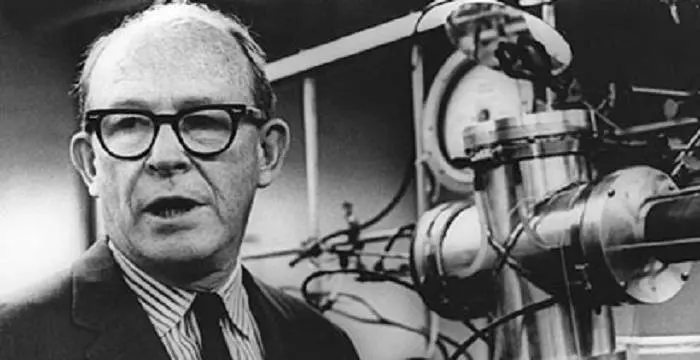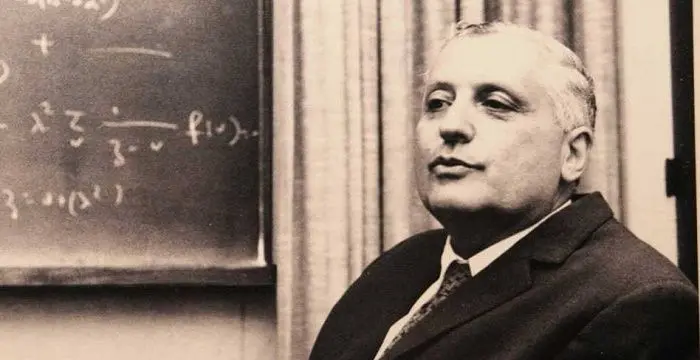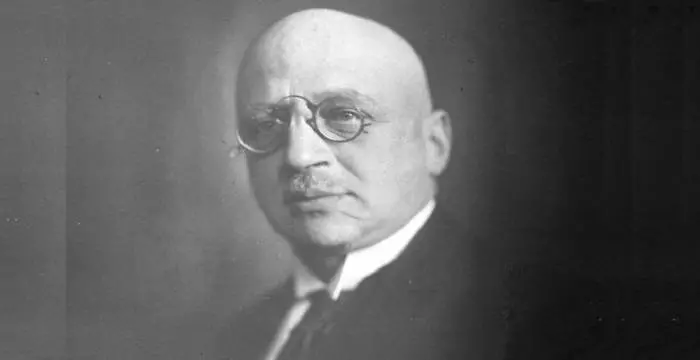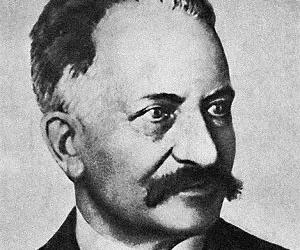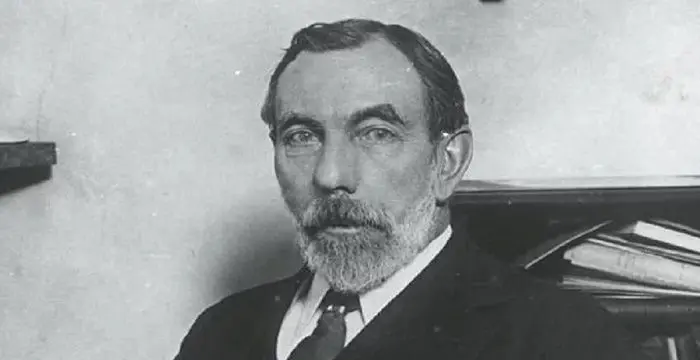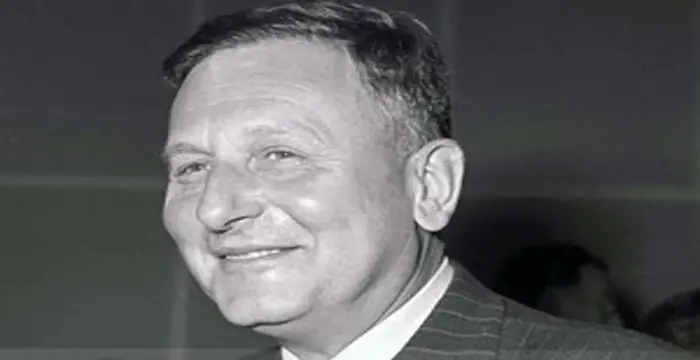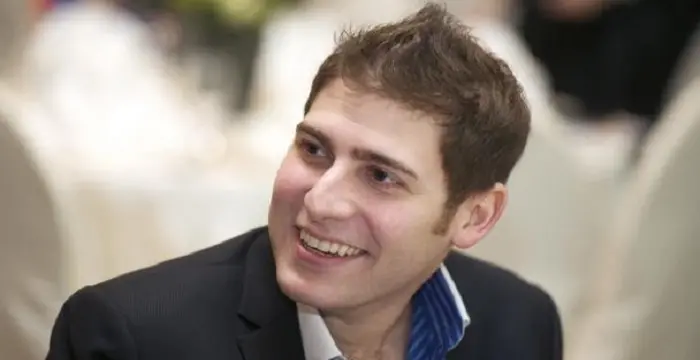
Paul Walden - Inorganic Chemists, Birthday and Childhood
Paul Walden's Personal Details
Paul Walden was a Latvian-German chemist who is known for his path-breaking invention known as Walden inversion
| Information | Detail |
|---|---|
| Birthday | July 26, 1863 |
| Died on | January 22, 1957 |
| Nationality | German, Latvian |
| Famous | Scientists, Chemists, Inorganic Chemists, Physical Chemists |
| Universities |
|
| Discoveries / Inventions |
|
| Birth Place | Cēsis |
| Born Country | Latvia |
| Gender | Male |
| Sun Sign | Leo |
| Born in | Cēsis |
| Famous as | Chemist |
| Died at Age | 93 |
// Famous Physical Chemists
Willard Libby
Willard Frank Libby was an American physical chemist who was awarded the ‘Nobel Prize’ in Chemistry in 1960. This biography profiles his childhood, life, career, research, achievements and timeline.
Ilya Prigogine
Ilya Prigogine was a Russian-born Belgian physical chemist who was awarded the Nobel Prize for Chemistry in 1977. This biography of Ilya Prigogine provides detailed information about his childhood, life, achievements, works & timeline.
Fritz Haber
Fritz Haber was a German chemist who won the 1918 Nobel Prize in Chemistry for the synthesis of ammonia from its elements. Check out this biography to know about his childhood, life, achievements, works & timeline.
Paul Walden's photo
Who is Paul Walden?
Paul Walden was Latvian-German scientist. His work in stereochemistry and the history of chemistry lead to multiple breakthroughs in the field of chemistry. Perhaps most notably, his name is remembered through the “Walden inversion”, a stereochemical reaction that he invented. He is also well-known for having synthesized an ionic liquid at room temperature, achieving the feat with ethylammonium nitrate. Walden worked as chemistry professor at various European universities, where he was highly lauded for his skills as a lecturer as well as for his breakthroughs in the laboratory. Living and working in early-20th century Europe, some of Walden’s activities were interrupted during the two World Wars. While he was nominated for a Nobel Prize in 1913 and 1914, the First World War interrupted that period of his work as well as the recognitions. Nonetheless, he lived a long life, lecturing and working until his final years. Today, his work is regularly commemorated by the scientific community and particularly in Latvia, where he was born and spent many of his busiest years. Given the importance of the Walden Inversion, he is often referred to as the founder of physical organic chemistry.
// Famous Inorganic Chemists
William Ramsay
William Ramsay was a Nobel Prize winning chemist who discovered the ‘noble gases’. To know more about his childhood, profile, timeline and career read on
Alfred Werner
Alfred Werner was a Swiss chemist and the founder of coordination chemistry. This biography of Werner provides detailed information about his childhood, life, research, work, achievements and timeline.
Paul Hermann Müller
Paul Hermann Muller was a Swiss Chemist who won the Nobel Prize in Physiology or Medicine for his discovery of a form of DDT. This biography profiles his childhood, life, research, achievements and timeline.
Childhood & Early Life
He was born on 26 July 1863 in Rozula, within what is now the Paraguja municipality of Latvia, to a large family of peasants.
When he was only four years old, both of his parents died, leaving him in the care of his twelve older siblings. Two of his older brothers, who were working in Riga, supported Walden through childhood and paid for him to attend boarding school and eventually attend university.
In 1882, Walden completed his school education; having attended a general high school in the town of Cesis and a technical high school in Riga.
Career
Walden’s academic life began in December 1882, when he enrolled in Riga Technical University and began focusing his studies on chemistry.
In 1886, he published his first scientific study, which focused on the reactions of nitric and nitrous acid together with various reagents. He analyzed the colors of these reactions and established the limits of sensitivity of the color method for detecting nitric acid.
In April 1887, still in university, he was appointed as a member of the Russian Physico-Chemical Society.
In the same year, Walden began collaborating with Wilhelm Ostwald, a Nobel Prize-winning chemist and mentor to Walden. Together, the two published a joint work in that year, which assessed how molecular weight determined the electrical conductivity of aqueous solutions of salts.
In 1888, having already published papers of his own and jointly with Ostwald, Walden graduated with a degree in chemical engineering from Riga Technical University. He remained at the same university, now as an assistant to professor C. Bischof.
Between 1888 and 1889, he compiled the “Handbook of Stereochemistry”, a resource that comprised the results of dozens of chemical syntheses and characterizations.
In 1890 and 1891, he visited Ostwald at the University of Leipzig and there defended his master thesis, which focused on the affinity values of some particular organic acids. Walden turned down an offer to continue at Leipzig as a lecturer, instead returning to Riga.
In 1892, he was appointed as an assistant professor of physical chemistry at the Riga Technical University, defending his doctorate within one year of the appointment.
In 1894, he became a full professor at Riga Technical University, teaching analytical and physical chemistry.
In 1895, just one year into his professorship, Walden discovered the Walden Inversion, which demonstrated that using certain exchange reactions, it is possible to obtain different stereoisomers from the same compound. This breakthrough would endure as Walden’s most renowned accomplishment throughout his life.
In 1896, the Riga Technical University underwent widespread reforms and Walden was responsible for reorganizing the Chemistry Department, which he accomplished in collaboration with Ostwald, who sent suggestions from the University of Leipzig.
In 1911, Walden was invited by Mikhail Lomonosov to serve as a leading member of the Chemical Laboratories of the St Petersburg Academy of Sciences, a post he held until 1919.
In response to political unrest in Russia and Latvia, Walden stepped back from research to focus on teaching and administrative work, first in Latvia and then in Germany, where he served as a professor of inorganic chemistry at the University of Rostock. He served in this position till 1934.
In 1924, he was invited back to Riga for a series of lectures and was offered teaching positions both in Riga and St. Petersburg, which he declined.
In 1942, the British bombing of Rostock destroyed a library of the history of chemistry that Walden had assembled, which included over 10,000 volumes.
Major Works
He is known for his path-breaking invention, known as Walden Inversion, which demonstrated that using certain exchange reactions, it is possible to obtain different stereoisomers from the same compound.
He synthesized the first room-temperature ionic liquid, ethyl ammonium nitrate.
Awards & Achievements
In 1913 and 1914, Walden was nominated as a candidate for the Nobel Prize in Chemistry.
Personal Life & Legacy
After the British bombing of Rostock, Walden and his wife were left homeless. They traveled throughout Germany until Walden got the job of lecturer in Gammertingen, where he taught into his 80s.
Due to the post-war division of Germany into four parts, he was unable to collect his pension; this situation forced him to continue lecturing until the end of his life.
Walden died on 22 January 1957, at the age of 93, in Gammertingen, West Germany.
Since 1988, the Paul Walden medal is awarded every three years by Riga Technical University for exceptional work in Chemistry and Science History.
Since 2006, the Latvian Chemical Society has held an annual Paul Walden Symposium for chemists to engage and exchange ideas, in the tradition of Walden’s contributions of the field.
Trivia
Aside from his accomplishments in chemistry, Walden was prized as an exceptional lecturer. In his own memoirs, he explained that “the feedback of sympathetic listeners gave me strength… I never considered teaching as a burden.”
When asked about his nationality, which was alternately described as Latvian, Russian or German, Walden is reported to have once said, “I’m a chemist.”
// Famous Chemists
Henry Cavendish
Henry Cavendish was a theoretical chemist and physicist, renowned for discovery of hydrogen and calculation of the mass of earth. To know more about his childhood, profile, timeline and career read on
Walter Kohn
Nobel Laureate Walter Kohn was an Austrian-born American theoretical chemist and physicist. Check out this biography to know about his childhood, life, achievements, works & timeline.
Jabir Ibn Hayyan
Jabir Ibn Hayyan was a medieval era polymath. Check out this biography to know about his life, works and achievements.
Paul Walden biography timelines
- // 26th Jul 1863He was born on 26 July 1863 in Rozula, within what is now the Paraguja municipality of Latvia, to a large family of peasants.
- // 1882In 1882, Walden completed his school education; having attended a general high school in the town of Cesis and a technical high school in Riga.
- // Dec 1882Walden’s academic life began in December 1882, when he enrolled in Riga Technical University and began focusing his studies on chemistry.
- // 1886In 1886, he published his first scientific study, which focused on the reactions of nitric and nitrous acid together with various reagents. He analyzed the colors of these reactions and established the limits of sensitivity of the color method for detecting nitric acid.
- // Apr 1887In April 1887, still in university, he was appointed as a member of the Russian Physico-Chemical Society.
- // 1888In 1888, having already published papers of his own and jointly with Ostwald, Walden graduated with a degree in chemical engineering from Riga Technical University. He remained at the same university, now as an assistant to professor C. Bischof.
- // 1888 To 1889Between 1888 and 1889, he compiled the “Handbook of Stereochemistry”, a resource that comprised the results of dozens of chemical syntheses and characterizations.
- // 1890 To 1891In 1890 and 1891, he visited Ostwald at the University of Leipzig and there defended his master thesis, which focused on the affinity values of some particular organic acids. Walden turned down an offer to continue at Leipzig as a lecturer, instead returning to Riga.
- // 1892In 1892, he was appointed as an assistant professor of physical chemistry at the Riga Technical University, defending his doctorate within one year of the appointment.
- // 1894In 1894, he became a full professor at Riga Technical University, teaching analytical and physical chemistry.
- // 1895In 1895, just one year into his professorship, Walden discovered the Walden Inversion, which demonstrated that using certain exchange reactions, it is possible to obtain different stereoisomers from the same compound. This breakthrough would endure as Walden’s most renowned accomplishment throughout his life.
- // 1896In 1896, the Riga Technical University underwent widespread reforms and Walden was responsible for reorganizing the Chemistry Department, which he accomplished in collaboration with Ostwald, who sent suggestions from the University of Leipzig.
- // 1911 To 1919In 1911, Walden was invited by Mikhail Lomonosov to serve as a leading member of the Chemical Laboratories of the St Petersburg Academy of Sciences, a post he held until 1919.
- // 1924In 1924, he was invited back to Riga for a series of lectures and was offered teaching positions both in Riga and St. Petersburg, which he declined.
- // 1942In 1942, the British bombing of Rostock destroyed a library of the history of chemistry that Walden had assembled, which included over 10,000 volumes.
- // 22nd Jan 1957Walden died on 22 January 1957, at the age of 93, in Gammertingen, West Germany.
// Famous Scientists
Juliane Koepcke
Juliane Koepcke is a German-Peruvian biologist, who was the lone survivor among the 92 passengers and crew of the ill-fated LANSA Flight 508 that crashed in the Peruvian rainforest on 24 December 1971. Know more about her life in this biography.
Henry Cavendish
Henry Cavendish was a theoretical chemist and physicist, renowned for discovery of hydrogen and calculation of the mass of earth. To know more about his childhood, profile, timeline and career read on
Konstantin Tsiolkovsky
Konstantin Tsiolkovsky was a Russian rocket scientist and a pioneer of astronautics. This biography provides detailed information about his childhood, family, personal life, career, achievements, etc.
Gabe Newell
Gabe Newell is an American computer programmer and businessman, best known as the co-founder of ‘Valve Corporation.’ This biography provides detailed information about his childhood, family, personal life, career, etc.
Grigori Perelman
Grigori Perelman is a Russian mathematician who is best known for his contributions to Riemannian geometry and geometric topology. Check out this biography to know about his childhood, family life, achievements and fun facts about him.
Eduardo Saverin
Eduardo Luiz Saverin is a Brazilian internet entrepreneur and investor. This biography profiles his childhood, life, career, achievements, and timeline
Paul Walden's FAQ
What is Paul Walden birthday?
Paul Walden was born at 1863-07-26
When was Paul Walden died?
Paul Walden was died at 1957-01-22
Where was Paul Walden died?
Paul Walden was died in Gammertingen
Which age was Paul Walden died?
Paul Walden was died at age 93
Where is Paul Walden's birth place?
Paul Walden was born in Cēsis
What is Paul Walden nationalities?
Paul Walden's nationalities is German, Latvian
What was Paul Walden universities?
Paul Walden studied at Leipzig University, Riga Technical University
What is Paul Walden's inventions/discoveries?
Walden Inversion, Ethylammonium Nitrate was invented (or discovered) by Paul Walden
What is Paul Walden's sun sign?
Paul Walden is Leo
How famous is Paul Walden?
Paul Walden is famouse as Chemist
